Home>Garden Essentials>Why Are Crop Rotation And Letting Land Rest Sustainable Practices?
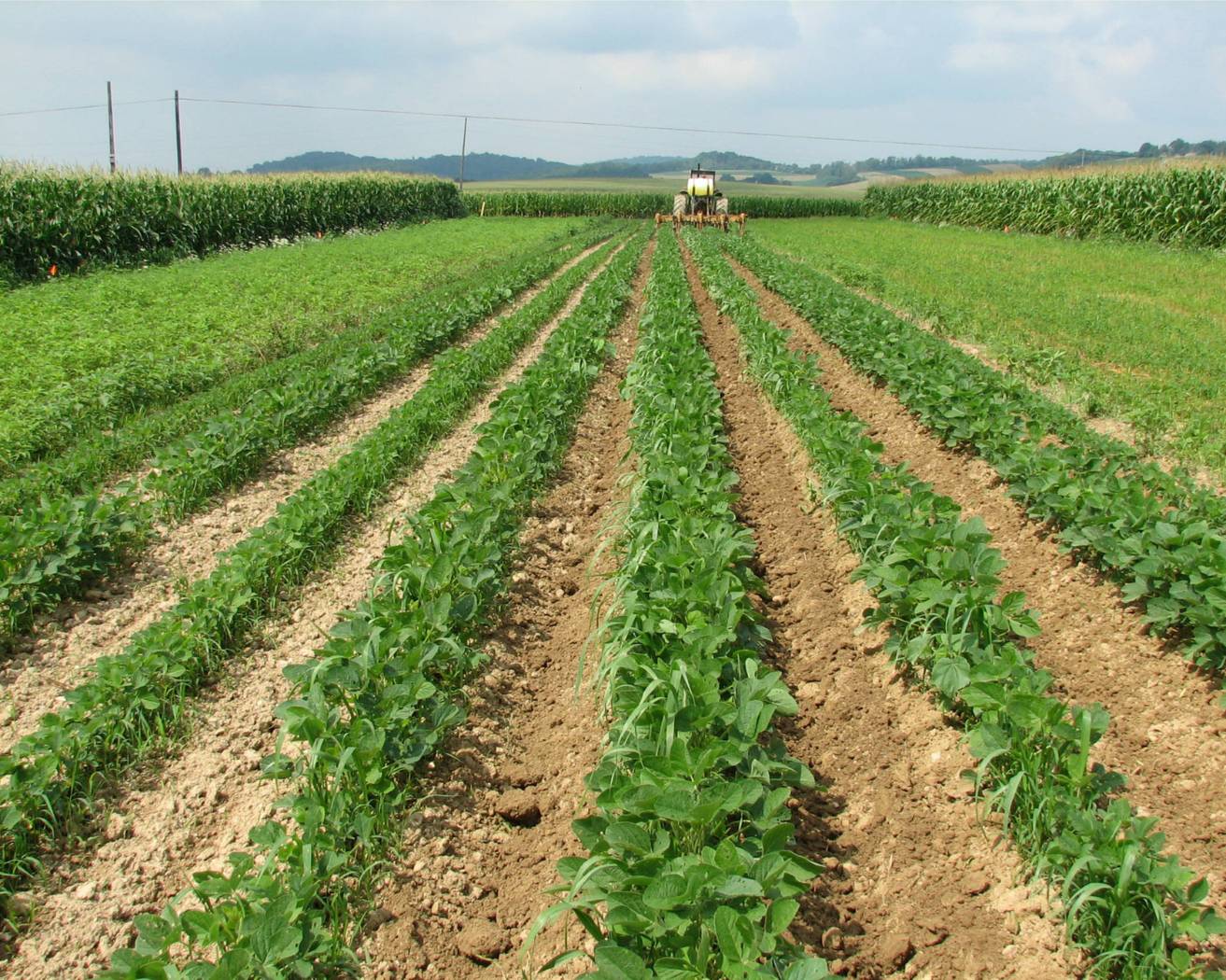

Garden Essentials
Why Are Crop Rotation And Letting Land Rest Sustainable Practices?
Modified: March 15, 2024
Discover the benefits of crop rotation and letting land rest for your garden. Learn how these sustainable practices can enhance soil health and yield healthier, more abundant crops.
(Many of the links in this article redirect to a specific reviewed product. Your purchase of these products through affiliate links helps to generate commission for Storables.com, at no extra cost. Learn more)
Introduction
Gardening and agriculture have long been essential activities for humans, providing a reliable source of food and contributing to the overall well-being of communities. However, as we have become more aware of the impact of our actions on the environment, sustainable practices have gained greater importance. Two key practices that contribute to sustainability in agriculture are crop rotation and letting land rest.
Crop rotation involves the systematic planting of different crops in a specific sequence over a defined period of time, while letting land rest refers to leaving fields fallow or unplanted for a season or more. These practices have been utilized for centuries and have proven to have numerous benefits for the environment, soil health, and the overall productivity of agricultural systems.
In this article, we will explore the reasons why crop rotation and letting land rest are considered sustainable practices. We will delve into the benefits they offer, discuss their role in enhancing soil health, managing pests and diseases, and improving nutrient management. Additionally, we will touch upon the sustainability aspect of these practices by examining how they contribute to the conservation of soil resources, the enhancement of biodiversity, and the reduction of dependence on synthetic inputs.
While crop rotation and letting land rest have many advantages, it’s important to acknowledge that they also come with certain challenges and limitations. We will examine these factors, including the adaptability of these practices to different farming systems and the economic considerations involved.
By understanding the importance of crop rotation and letting land rest as sustainable practices, we can make informed decisions to implement them in our own gardens or advocate for their adoption in larger agricultural systems. Let’s dive into the benefits and sustainability of crop rotation and letting land rest, exploring the positive impact they can create for our environment and future generations.
Key Takeaways:
- Crop rotation and letting land rest are sustainable practices that improve soil health, manage pests, and increase crop yields, contributing to the long-term sustainability of agriculture and the environment.
- While crop rotation offers significant benefits, it also presents challenges such as adaptability to different farming systems, economic considerations, and weed and pest management. However, with knowledge sharing and support, farmers can successfully integrate crop rotation into their farming systems.
Read more: How Is Crop Rotation Sustainable
Benefits of Crop Rotation
Crop rotation offers a wide range of benefits that contribute to the overall health and productivity of agricultural systems. By diversifying the crops grown in a specific area, farmers can effectively manage pests and diseases, improve soil fertility, and increase crop yields. Let’s explore some of the key benefits of crop rotation:
- Improved Soil Health: One of the primary benefits of crop rotation is its positive impact on soil health. Different plants have unique nutrient requirements and root system structures. By rotating crops, the nutrient balance in the soil can be maintained, preventing nutrient depletion. Furthermore, certain crops, like legumes, have the ability to fix atmospheric nitrogen and improve soil fertility.
- Reduced Soil Erosion: Continuous cultivation of the same crops can lead to soil erosion, as the soil becomes more susceptible to wind and water erosion. However, crop rotation helps reduce soil erosion by breaking the continuous cycle of cultivating the same crop in the same area. By alternating crops, the soil structure is improved, reducing the risk of erosion.
- Pest and Disease Management: Crop rotation plays a crucial role in managing pests and diseases. Many pests and diseases have specific host preferences, and by rotating crops, the buildup of pathogens or pests that target a particular crop can be minimized. This reduces the need for chemical pesticides, promotes natural pest control, and helps maintain a healthy ecosystem within the farming environment.
- Nutrient Management: Crop rotation allows for efficient nutrient management. Different crops require varying nutrient inputs, and by rotating crops, the demand for specific nutrients can be balanced. This reduces the risk of nutrient depletion and excess, leading to more sustainable and efficient use of fertilizers and other amendments.
- Increased Crop Yields: Crop rotation has been shown to increase crop yields. By carefully selecting the sequence of crops, farmers can optimize nutrient availability, minimize pest and disease pressure, and improve soil health, resulting in higher crop productivity. This can be especially beneficial in areas with limited resources, where maximizing yields is essential for food security.
The benefits of crop rotation extend beyond individual farms to the broader environment and society. By practicing crop rotation, farmers can contribute to the sustainability and resilience of agricultural systems, fostering a healthier ecosystem for future generations.
Improved Soil Health
One of the key benefits of crop rotation is its ability to improve soil health. Soil is a vital resource for agriculture, providing essential nutrients and a supportive environment for plant growth. Unfortunately, intensive and continuous cultivation can lead to soil degradation and nutrient depletion. Crop rotation offers a sustainable solution to address these issues and promote soil health. Here’s how crop rotation improves soil health:
1. Nutrient Balancing: Different crops have varying nutrient requirements. Some crops are heavy feeders, while others may have specific nutrient demands. By rotating crops, the nutrient balance in the soil can be maintained. For example, a crop that is known to deplete specific nutrients can be followed by a crop that replenishes those nutrients, ensuring the soil remains fertile and productive.
2. Soil Structure Enhancement: Each crop has a different root system structure and depth. Some plants have fibrous roots that help improve soil structure, creating channels for water and air movement. Others have taproots that can break up compacted soil. By rotating crops with different root systems, soil compaction is reduced, and soil structure is enhanced. This allows for better water infiltration, nutrient absorption, and root development, resulting in healthier plants.
3. Soil Organic Matter Accumulation: Crop residues and root exudates contribute to the accumulation of organic matter in the soil. Organic matter is a key component of healthy soil, as it improves soil structure, water-holding capacity, and nutrient availability. Certain crops, such as legumes, have the ability to fix atmospheric nitrogen, adding nitrogen to the soil and increasing soil fertility. By incorporating crops that contribute to organic matter accumulation into the rotation, soil health is improved over time.
4. Disease and Pest Suppression: Continuous cultivation of the same crop can lead to the buildup of pathogens and pests that specifically target that crop. This can result in increased disease and pest pressure, requiring heavy and frequent use of chemical pesticides. By rotating crops, the cycle of pests and diseases is disrupted. Some crops have natural abilities to suppress pests and diseases, while others are less susceptible to specific pathogens. This reduces the need for synthetic inputs and promotes a more balanced and natural ecosystem within the soil.
5. Soil Erosion Reduction: Soil erosion is a major concern in agriculture, leading to the loss of topsoil and valuable nutrients. Continuous cultivation of the same crop can exacerbate soil erosion, as the soil becomes more vulnerable to wind and water erosion. Crop rotation helps mitigate soil erosion by improving soil structure and reducing the risk of erosion. Different crops have different root systems that help bind the soil, improve its stability, and protect it from erosive forces.
Crop rotation is a powerful tool for preserving and enhancing soil health. By implementing a diverse crop rotation plan, farmers can improve soil fertility, structure, and resilience, ensuring long-term productivity and sustainability of agricultural systems.
Reduced Soil Erosion
Soil erosion is a significant environmental concern that can have detrimental effects on agricultural productivity and the health of ecosystems. It is caused by the movement of soil particles through wind or water, often resulting from intensive and continuous cultivation practices. Crop rotation plays a crucial role in reducing soil erosion and preserving the integrity of our valuable soil resources. Here’s how crop rotation helps minimize soil erosion:
1. Breaks Continuous Cropping Cycle: Continuous cultivation of the same crop in the same area can lead to the depletion of nutrients, decreased organic matter content, and reduced soil structure. These factors weaken the soil’s ability to resist erosion. By implementing crop rotation, different crops are grown in a sequence over time. This disrupts the continuous cropping cycle and allows for the restoration and rejuvenation of the soil, reducing soil erosion risks.
2. Soil Structure Improvement: Different crops have varying root architectures, which contribute to improving soil structure. Some plants, such as deep-rooted crops like trees or crops with extensive fibrous root systems, can penetrate deep into the soil, creating channels for water infiltration and reducing soil compaction. This improved soil structure enhances the soil’s ability to hold water, reduces surface runoff, and minimizes erosion caused by heavy rainfall or irrigation.
3. Covering and Protecting the Soil: Certain crops, such as cover crops, are particularly effective in reducing soil erosion. Cover crops are planted specifically to cover and protect the soil when primary crops are not grown. They form a dense canopy or ground cover that acts as a physical barrier, preventing soil particles from being carried away by wind or water. Cover crops also help to retain moisture, reduce evaporation, and contribute organic matter to the soil when they are eventually incorporated.
4. Controlling Wind Erosion: Wind erosion can be a significant problem in arid and semi-arid regions. Crop rotation can help mitigate wind erosion by strategically planting crops that offer windbreaks or have dense canopies. Trees, shrubs, or tall crops can serve as natural windbreaks, reducing the velocity of wind and preventing the erosion of topsoil. Additionally, crops with extensive root systems help bind the soil particles, making them less susceptible to wind erosion.
5. Managing Water Erosion: Water erosion occurs when rainfall or irrigation washes away the topsoil, carrying valuable nutrients with it. Crop rotation helps manage water erosion by optimizing water usage and improving soil structure. Different crops have different water requirements, which vary depending on their growth stages. By alternating crops with varied water needs, water is utilized more efficiently, reducing runoff and erosion. Additionally, deep-rooted crops improve water infiltration, allowing the soil to absorb and retain more water during heavy rains.
By practicing crop rotation, farmers can significantly reduce soil erosion and ensure the long-term sustainability of their agricultural systems. These practices contribute to the preservation of soil resources, protect water quality, and foster a healthier environment for future generations.
Pest and Disease Management
Pest infestations and disease outbreaks can cause significant damage to crops, leading to reduced yields and economic losses for farmers. Traditional agricultural practices often rely on the use of synthetic pesticides and fungicides to control pests and diseases. However, these chemicals can have negative impacts on the environment, as well as human and animal health. Crop rotation offers a sustainable approach to pest and disease management by interrupting the life cycles of pests and pathogens. Here’s how crop rotation helps manage pests and diseases:
1. Disruption of Pest Life Cycles: Many pests have specific host preferences, meaning they thrive on or target particular crops. By regularly rotating crops, the pests’ life cycles are disrupted, as their preferred host may not be present in the rotation. This helps reduce pest populations, as they are unable to rely on a continuous and abundant food source. Additionally, some crops have natural pest repellent properties, further discouraging pest infestations.
2. Disease Suppression: Crop rotation helps manage diseases by reducing the buildup and spread of pathogens in the soil. Certain diseases can survive in the soil or plant debris and infect crops in subsequent seasons. By rotating crops, the diseases’ host plants are removed from the field, preventing the pathogens from proliferating. This reduces the need for chemical fungicides and promotes a healthier farming environment.
3. Natural Pest Control: Crop rotation encourages the presence of beneficial insects and organisms that contribute to natural pest control. Some insects act as predators or parasites, feeding on pests and keeping their populations in check. By diversifying the crops, the habitat and food sources for these beneficial organisms are increased, encouraging their presence in the farming ecosystem. This natural pest control reduces reliance on chemical pesticides and promotes a more balanced and sustainable approach to pest management.
4. Nutritional Balance: Different crops have different nutrient requirements. Some pests are attracted to nutrient imbalances in the soil, targeting crops that are deficient in certain nutrients. By rotating crops, the nutrient balance in the soil can be maintained, reducing the vulnerability of plants to pest attacks. Additionally, certain crops, like legumes, have the ability to fix atmospheric nitrogen, enriching the soil with this essential nutrient and providing natural resistance to pests that thrive in nitrogen-deficient conditions.
5. Reduced Chemical Inputs: By effectively managing pests and diseases through crop rotation, farmers can minimize the use of synthetic pesticides and fungicides. This reduces chemical residues in crops, protects the environment, and maintains the health of beneficial insects and organisms that contribute to ecological balance.
Crop rotation offers a sustainable approach to pest and disease management, promoting a healthier farming environment, reducing reliance on synthetic chemicals, and preserving the long-term productivity of agricultural systems.
Read more: Why Do Farmers Practice Crop Rotation
Nutrient Management
Nutrients are essential for healthy plant growth and optimal crop yields. However, continuous cultivation of the same crops without proper nutrient management can lead to nutrient depletion and imbalances in the soil. Crop rotation is an effective practice for optimizing nutrient availability and utilization, ensuring the sustainable productivity of agricultural systems. Here’s how crop rotation helps in nutrient management:
1. Nutrient Cycling: Different crops have distinct nutrient requirements and uptake capacities. By rotating crops, farmers can take advantage of the natural nutrient cycling process. Some crops are known as nutrient accumulators, meaning they efficiently absorb specific nutrients from the soil. When these crops are followed by different crops, the nutrients stored in the plant residues and root systems are released back into the soil, making them available for the next crop in the rotation cycle.
2. Organic Matter Incorporation: Crop residues and roots left behind after harvest contribute to the organic matter content of the soil. Organic matter is a vital component of healthy soil, as it improves nutrient retention, water-holding capacity, and overall soil structure. Certain crops, such as legumes, add significant amounts of organic matter to the soil through their nitrogen-fixing ability. Incorporating these crops into the rotation enhances nutrient availability and promotes soil fertility and health.
3. Nutrient Balancing: Different crops have varying nutrient demands. Some crops are heavy feeders, requiring higher amounts of specific nutrients. By rotating crops, the nutrient balance in the soil can be maintained. For example, if a crop depletes a specific nutrient, rotating to a different crop that has lower nutrient demands for that nutrient can help prevent depletion and nutrient imbalances. This practice minimizes the need for excessive fertilizer application and promotes efficient nutrient utilization.
4. Symbiotic Relationships: Certain crops, particularly legumes, form symbiotic relationships with nitrogen-fixing bacteria called rhizobia. These bacteria reside in the nodules on the plant roots and convert atmospheric nitrogen into a form that is readily available to the plant. When legumes are included in the crop rotation, they contribute nitrogen to the soil, reducing the reliance on synthetic nitrogen fertilizers. This natural nitrogen fixation process not only improves soil fertility but also reduces the environmental impact associated with nitrogen fertilizer production and use.
5. Reduced Nutrient Leaching: Excessive application of fertilizers can lead to nutrient leaching, where nutrients are washed away from the root zone and become pollutants in water bodies. Crop rotation helps minimize nutrient leaching by optimizing nutrient usage. By rotating crops with different nutrient requirements, the risk of excess nutrient accumulation is reduced. This reduces the potential for leaching, protecting water quality and minimizing the environmental impact of nutrient runoff.
Crop rotation plays a vital role in effective nutrient management. It enhances nutrient cycling, balances nutrient availability, promotes organic matter incorporation, and reduces the reliance on synthetic fertilizers. These practices contribute to sustaining soil fertility, minimizing nutrient loss, and supporting long-term agricultural productivity.
Increased Crop Yields
One of the primary goals of agriculture is to maximize crop yields, ensuring an abundant food supply and economic stability for farmers. Crop rotation is a valuable practice that has been shown to increase crop yields by optimizing soil health, nutrient availability, pest and disease management, and overall farm productivity. Here’s how crop rotation contributes to increased crop yields:
1. Enhanced Soil Fertility: Continuous cultivation of the same crop can deplete specific nutrients from the soil, leading to nutrient deficiencies and reduced yields. Crop rotation helps maintain and enhance soil fertility by diversifying the nutrient demands of different crops. Plants have varying nutrient requirements, and by rotating crops with different nutrient needs, the soil’s nutrient balance is improved. This ensures that crops have access to adequate nutrients throughout their growth cycle, promoting healthy plant development and higher yields.
2. Pest and Disease Management: Crop rotation plays a crucial role in managing pests and diseases, ultimately leading to higher crop yields. Different crops have varying susceptibilities to pests and diseases. By rotating crops, the buildup of pests and pathogens that target a specific crop can be minimized. This reduces the need for synthetic pesticides and fungicides, promoting a healthier farming environment and reducing the risk of yield loss due to pest infestations or disease outbreaks.
3. Nutrient Optimization: Crop rotation optimizes nutrient usage, leading to increased crop yields. Different crops have different nutrient requirements. By rotating crops, the correct balance of nutrients can be maintained in the soil. This ensures that crops receive the necessary nutrients for their growth and development, without overloading or depleting the soil of specific nutrients. Proper nutrient management enhances plant vigor, maximizing yield potential.
4. Soil Structure Enhancement: Crop rotation improves soil structure, which in turn promotes higher crop yields. Different crops have varying root structures, with some crops having deep taproots and others having fibrous and shallow roots. By rotating crops with different root architectures, the soil structure is improved. Deep-rooted crops help break up compacted soil layers, allowing for better water infiltration and root penetration. Improved soil structure allows nutrients and water to be more effectively absorbed by plants, resulting in increased yields.
5. Biological Interactions: Crop rotation encourages beneficial interactions within the farming ecosystem, leading to increased crop yields. Certain crops attract beneficial insects that act as natural pollinators and pest predators. By rotating crops, these beneficial organisms are provided with a continuous food source and habitat, enhancing their presence in the farming system. Pollination ensures higher fruit set, while natural pest control reduces crop losses due to pest damage, ultimately boosting yields.
By adopting a well-planned crop rotation system, farmers can optimize their agricultural practices, enhance soil fertility, manage pests and diseases, and improve overall crop health. These factors combined contribute to increased crop yields, ensuring a sustainable and bountiful harvest year after year.
Sustainability of Crop Rotation
Crop rotation is not only beneficial for individual farms but also plays a crucial role in creating sustainable agricultural systems. Implementing crop rotation practices promotes the long-term health and productivity of the land while minimizing environmental impacts. Here are some key aspects that highlight the sustainability of crop rotation:
1. Conservation of Soil Resources: Crop rotation helps conserve soil resources by maintaining soil fertility and structure. By diversifying the crops grown in a field, nutrient depletion and soil erosion are minimized. The incorporation of cover crops and organic matter through rotation practices further enhances soil quality and reduces the need for synthetic fertilizers. Preserving the integrity of the soil not only ensures future crop productivity but also helps in mitigating climate change through carbon sequestration.
2. Enhancement of Biodiversity: Crop rotation contributes to the preservation and enhancement of biodiversity in agricultural landscapes. Diversifying crops enhances habitat availability, attracting a broader range of beneficial insects, birds, and microorganisms. These organisms promote natural pest control and improve pollination, ultimately supporting ecosystem balance and reducing the reliance on chemical inputs. Increased biodiversity also fosters resilience against environmental changes and helps maintain ecological integrity in and around farmland.
3. Reduced Dependence on Synthetic Inputs: Crop rotation reduces the dependence on synthetic inputs, such as chemical fertilizers, pesticides, and fungicides. By implementing rotation practices, farmers can naturally manage soil fertility and pest populations, minimizing the need for these external inputs. This reduces the costs associated with purchasing and applying synthetic inputs while minimizing the potential negative impacts they can have on the environment, human health, and non-target organisms.
4. Water Conservation: Crop rotation contributes to water conservation and efficient water usage. Different crops have varying water requirements, and by rotating crops, farmers can match the plants’ needs with the available water supply. This reduces water waste and ensures that water is used more effectively within the farming system. Enhanced soil structure resulting from crop rotation also improves water infiltration and retention, reducing water runoff and improving water quality.
5. Economic Resilience: The economic sustainability of farming is essential for the longevity of agricultural systems. Crop rotation helps improve farm profitability through higher crop yields, reduced input costs, and decreased risks associated with pest and disease outbreaks. By diversifying the crops grown, farmers can also adapt to market demands and fluctuations, ensuring a steady income stream and mitigating the economic risks associated with relying solely on a single crop.
By employing crop rotation practices in agricultural systems, farmers contribute to the sustainability of their operations and the wider environment. These practices help conserve soil resources, enhance biodiversity, reduce reliance on synthetic inputs, conserve water, and promote economic resilience. By implementing crop rotation, farmers can ensure the long-term viability and profitability of their farms while safeguarding the health and well-being of the planet.
Crop rotation and letting land rest are sustainable practices because they help maintain soil fertility, reduce the risk of pests and diseases, and improve overall crop yield. By rotating crops and allowing land to rest, nutrients are replenished and the soil structure is preserved, leading to long-term sustainable agriculture.
Conservation of Soil Resources
Soil is a valuable and finite resource that serves as the foundation for agriculture and supports the growth of crops. However, soil degradation has become a significant environmental concern worldwide, threatening agricultural productivity and ecosystem health. Crop rotation is a sustainable practice that plays a vital role in conserving soil resources. Here’s how crop rotation helps in the conservation of soil:
1. Prevents Soil Erosion: Soil erosion is a major cause of soil degradation, leading to the loss of topsoil, which is rich in organic matter and nutrients. Continuous cultivation of the same crops in a field can exacerbate soil erosion, as the soil becomes more vulnerable to wind and water erosion. Crop rotation helps minimize soil erosion by breaking the cycle of planting the same crop repeatedly. Different crops with varying root systems contribute to improved soil structure and stability, reducing the risk of erosion.
2. Nutrient Management: Crop rotation helps maintain and improve soil fertility by balancing nutrient demands. Different crops have varying nutrient requirements, and some crops may deplete specific nutrients from the soil. By rotating crops, the nutrient balance is preserved, preventing nutrient depletion and excessive fertilizer usage. Additionally, certain crops, like legumes, have the ability to fix atmospheric nitrogen, enriching the soil with this essential nutrient without the need for synthetic fertilizers.
3. Organic Matter Accumulation: Organic matter is a vital component of healthy soil, contributing to its fertility and structure. Continuous cultivation without adequate organic matter input can lead to soil degradation and decreased nutrient-holding capacity. Crop rotation promotes the accumulation of organic matter in the soil through the incorporation of crop residues and the growth of cover crops. The addition of organic matter improves soil structure, water retention, and nutrient cycling, ensuring the long-term health and productivity of the soil.
4. Disease and Pest Suppression: Continuous monoculture can make crops more susceptible to diseases and pests, as pathogens and pests can build up over time. Crop rotation disrupts the life cycles of pests and pathogens by alternating different crops, reducing their populations. This reduces the need for chemical pesticides, which can harm soil organisms and disrupt the natural ecological balance. By managing diseases and pests naturally through crop rotation, the overall health and resilience of the soil are preserved.
5. Soil Fertility Conservation: Crop rotation protects and conserves soil fertility by avoiding continuous cropping that depletes specific nutrients. By diversifying the crops grown in a field, the demand for nutrients is spread across different plants, preventing nutrient imbalance and depletion. This allows the soil to maintain its nutrient content and fertility over time, ensuring sustained crop productivity.
Conservation of soil resources is essential for the long-term productivity and sustainability of agricultural systems. Crop rotation helps prevent soil erosion, manages nutrient levels, encourages organic matter accumulation, suppresses diseases and pests naturally, and preserves soil fertility. By implementing crop rotation practices, farmers contribute to the preservation and health of the soil, ensuring its productive capacity for future generations.
Read more: How Do Rest Crops Relate To Crop Rotation?
Enhancement of Biodiversity
Biodiversity is the variety of life forms that exist in a given ecosystem, including plants, animals, microorganisms, and their interactions. Agriculture has the potential to significantly impact biodiversity, with the focus often being on maximizing production at the expense of natural habitats and species diversity. Crop rotation, however, provides a sustainable approach to agriculture that enhances biodiversity. Here’s how crop rotation contributes to the enhancement of biodiversity:
1. Habitat Creation: Crop rotation involves diversifying crops grown in a field over time. This practice creates a range of habitats that can support a wider variety of organisms. Different crops provide different types of plant cover, food sources, and microenvironments, attracting a diverse array of insects, birds, and small mammals. These habitats offer shelter, nesting sites, and foraging opportunities, thus promoting biodiversity within and around agricultural landscapes.
2. Beneficial Insects and Pollinators: Crop rotation attracts beneficial insects and pollinators, supporting biodiversity and ecosystem services. Many insects play an important role as natural predators, feeding on crop pests and helping to control their population. By rotating crops, farmers can provide a continuous food source for beneficial insects throughout the growing season, encouraging their presence on the farm. Additionally, the presence of diverse flowering crops in rotation can attract pollinators, ensuring effective pollination and increasing biodiversity in the surrounding area.
3. Soil Microorganisms: Soil is home to a vast array of microorganisms that play essential roles in nutrient cycling and soil health. Crop rotation promotes the diversity and activity of soil microorganisms, which contribute to enhanced soil fertility and plant growth. Different crops release unique root exudates, providing a range of nutrients and organic compounds that attract a variety of beneficial soil bacteria and fungi. These microorganisms help break down organic matter, fix nitrogen, improve soil structure, and enhance nutrient availability, thus fostering a healthier and more diverse soil ecosystem.
4. Wildlife Conservation: Crop rotation creates a mosaic of habitats that can support wildlife populations, contributing to the conservation of biodiversity. Fields planted with diverse crops provide food sources and cover for a range of wildlife species, including birds, mammals, and beneficial insects. By implementing crop rotation, farmers can create corridors for wildlife movement between different habitats, supporting population connectivity and allowing for the natural dispersal of species.
5. Genetic Diversity: Crop rotation helps maintain and enhance genetic diversity, which is critical in ensuring resilience and adaptability in agriculture. By growing a variety of crops, farmers preserve traditional and heirloom crop varieties, preventing genetic erosion. This diversity provides a broader genetic pool, allowing for the development of crops with improved traits, such as disease resistance and environmental adaptation. Maintaining diverse crop genetics also contributes to maintaining biodiversity at the genetic level.
By implementing crop rotation practices, farmers promote the enhancement of biodiversity on their farms and the surrounding landscape. This approach supports the conservation of beneficial insects, pollinators, soil microorganisms, and wildlife populations. Additionally, by preserving genetic diversity, crop rotation contributes to the long-term resilience and sustainability of agricultural systems.
Reduced Dependence on Synthetic Inputs
Agriculture has historically relied heavily on synthetic inputs such as chemical fertilizers, pesticides, and herbicides to maximize crop production. However, the widespread use of these inputs has raised concerns about their environmental impacts and long-term sustainability. Crop rotation offers a sustainable approach to farming by reducing the dependence on synthetic inputs. Here’s how crop rotation helps to reduce reliance on synthetic inputs:
1. Natural Nutrient Cycling: Crop rotation helps maximize the use of natural nutrient cycling processes, reducing the need for synthetic fertilizers. Different crops have varying nutrient requirements and abilities to cycle and fix nutrients in the soil. By rotating crops, the nutrient demands and contributions of each crop can be balanced. Nitrogen-fixing legumes, for example, can provide a valuable source of nitrogen, reducing the need for synthetic nitrogen fertilizers. This natural nutrient cycling minimizes nutrient imbalances and the risk of over-fertilization.
2. Pest and Disease Management: Continuous cultivation of the same crop can lead to the buildup of pests and diseases, often requiring the heavy use of synthetic pesticides and fungicides. Crop rotation disrupts the life cycles of pests and pathogens by alternating different crops. This reduces the reliance on chemical inputs for pest and disease control. Additionally, some crops have natural pest-repelling properties, further reducing the need for synthetic pesticides and promoting a more balanced and sustainable approach to pest management.
3. Weed Suppression: Certain crops, such as cover crops, have the ability to suppress weeds through their competitive nature, root exudates, and shading effects. Incorporating cover crops into the rotation can help reduce weed pressure, minimizing the need for synthetic herbicides. By diversifying crops and implementing practices like cover cropping, farmers can effectively manage weed populations without relying solely on chemical interventions.
4. Soil Fertility Enhancement: Continuous use of synthetic inputs can lead to soil degradation, nutrient imbalances, and reduced microbial activity. Crop rotation incorporates practices that improve soil health and fertility naturally. By diversifying crops and incorporating legumes or green manure cover crops into the rotation, organic matter content increases, nutrient availability improves, and soil microorganisms thrive. This enhances soil fertility and reduces the need for synthetic fertilizers and soil amendments.
5. Environmental Protection: Limiting the use of synthetic inputs through crop rotation contributes to the protection of the environment. Synthetic fertilizers and pesticides can have negative impacts on water quality, beneficial insects, soil microorganisms, and non-target organisms. By reducing reliance on these inputs, farmers help safeguard ecosystems and promote a healthier and more balanced agricultural environment.
Crop rotation provides a sustainable approach to agriculture by reducing the dependence on synthetic inputs. Through the natural management of nutrients, pests, diseases, and weeds, farmers can minimize the use of synthetic fertilizers, pesticides, and herbicides, promoting a more ecologically balanced farming system. By embracing crop rotation, farmers contribute to the long-term sustainability of agriculture while reducing negative environmental impacts.
Challenges and Limitations of Crop Rotation
While crop rotation offers numerous benefits for sustainable agriculture, there are also several challenges and limitations that farmers may encounter when implementing this practice. Understanding these challenges is crucial to effectively and successfully integrate crop rotation into farming systems. Here are some key challenges and limitations of crop rotation:
1. Adaptability to Different Farming Systems: Crop rotation may not be easily adaptable to all farming systems. Factors such as climate, soil type, availability of suitable crops, and market demands can impact the feasibility of implementing crop rotation. It requires careful planning and consideration of the specific conditions of the farm, which can vary from region to region.
2. Knowledge and Expertise: Implementing effective crop rotation requires knowledge and expertise in crop selection, sequencing, and management practices. Farmers need to have a thorough understanding of crop requirements, pest and disease dynamics, and nutrient management strategies for each crop in the rotation. Access to reliable information, training, and agricultural extension services is essential to overcome this challenge.
3. Economic Considerations: Crop rotation may pose economic challenges, especially in areas where crop specialization and economies of scale are prevalent. Growing a diverse range of crops in rotation can require additional labor, equipment, and resources. Market access and demand for specific crops may also influence the profitability of implementing crop rotation. Balancing economic viability and the long-term benefits of crop rotation can be a complex decision for farmers.
4. Weed Management: Crop rotation can influence weed populations, both positively and negatively. While certain crops can suppress weeds, rotation can also introduce new weed species or exacerbate the growth of certain weed populations. Adequate weed management strategies, such as timely tillage, cover cropping, and integrated weed management practices, need to be implemented to address weed challenges in a rotation system effectively.
5. Pest and Disease Transference: Some pests and diseases can survive on alternate hosts or remain in the soil, posing challenges in crop rotation systems. Rotating to a susceptible crop may lead to the buildup and spread of specific pests and diseases that can impact yields. Careful consideration of crop sequencing, monitoring, and appropriate management strategies is necessary to prevent pest and disease transference within the rotation.
6. Limited Crop Choices: In certain areas or farming systems, the availability of suitable crops for rotation may be limited. Factors such as climate, soil conditions, and local market demand can restrict the range of crops that can be included in the rotation. Limited crop options can make it challenging to achieve the desired benefits of diversifying the farming system.
7. Seasonal Limitations: Some crop rotations may be limited by seasonal factors. For example, in areas with short growing seasons, there may be constraints on the number of crops that can be successfully grown and rotated within a year. Overcoming seasonal limitations may require adaptations such as using cover crops or implementing crop diversification strategies that align with the available growing period.
8. Initial Adjustment Period: Introducing crop rotation to a farm that has been practicing continuous cropping may require an adjustment period. The transition from a mono-cropping system to a rotation system may lead to initial challenges such as changes in pest dynamics, nutrient management, and yield variations. Patience, monitoring, and adaptation are essential during the initial stages of implementing crop rotation.
While crop rotation offers numerous benefits for sustainable agriculture, it is important to be mindful of the challenges and limitations that can arise. By addressing these challenges through proper planning, knowledge sharing, and adaptive management practices, farmers can successfully integrate crop rotation into their farming systems and reap the long-term benefits it provides.
Adaptability to Different Farming Systems
Adapting crop rotation to different farming systems can present unique challenges and considerations. Factors such as climate, soil type, farm size, available resources, and market demands all play a role in determining the feasibility and effectiveness of implementing crop rotation. Here are some key points to consider regarding the adaptability of crop rotation to different farming systems:
1. Climate: Climate conditions significantly influence the choice of crops and the success of crop rotation. Different crops have varying temperature and moisture requirements, which may limit their adaptability to specific climates. For example, in arid regions, water availability may be a limiting factor, necessitating the selection of drought-tolerant crops or incorporating water conservation practices into the rotation.
2. Soil Type: Soil characteristics, such as texture, drainage, and fertility, affect the suitability of crops for a particular farming system. Different crops have varying soil preferences, and understanding soil properties is crucial in selecting crops for rotation. For example, crops that thrive in well-drained, sandy soils may not be suitable for heavy clay soils. Soil testing and analysis can guide the selection of rotations that are best suited to the specific soil conditions of a farm.
3. Farm Size and Resources: The size of the farm and available resources, including labor, machinery, and financial capacity, impact the suitability of crop rotation. Larger farms may have more flexibility in implementing diverse rotations, whereas small-scale farms may face logistical challenges due to limited resources. Flexibility and adaptability are key when tailoring crop rotations to fit the resources available within a particular farming system.
4. Market Demand and Crop Suitability: Assessing market demand and the suitability of certain crops for local conditions is crucial for successful crop rotation. Understanding consumer preferences and local market dynamics helps determine the profitability and viability of specific crops within the rotation. Additionally, considering factors such as pest and disease pressures, crop adaptability, and post-harvest infrastructure is essential in selecting crops that align with market demands and achieve the goals of crop rotation.
5. Integration with Livestock: Crop rotation can be adapted to include livestock as an integral part of the farming system. Integrating livestock allows for the use of manure as a natural fertilizer, enhances nutrient cycling, and offers additional economic opportunities. For example, a rotation that includes forage crops can provide feed for grazing animals, which in turn can contribute to soil fertility through manure deposition. The adaptability of crop rotation to livestock integration depends on factors such as land availability, animal management practices, and market opportunities.
6. Transitioning to Organic Farming: For farmers looking to transition to organic farming, crop rotation is a key component in managing pests, diseases, and soil fertility. Crop rotations that include cover crops, nitrogen-fixing legumes, and beneficial insect habitats can help reduce the dependence on synthetic inputs and promote organic practices. Careful planning and understanding of the organic certification requirements are essential when adapting crop rotation to organic farming systems.
7. Farmer Knowledge and Support: The adaptability of crop rotation is also influenced by the knowledge, experience, and support available to farmers. Access to agricultural extension services, research resources, and training programs is crucial in understanding the potential benefits and challenges of implementing crop rotation and in tailoring rotations to fit specific farming systems. Sharing farmer experiences and best practices within local farming communities can also enhance the adaptability and success of crop rotation.
Adapting crop rotation to different farming systems requires careful consideration of climate, soil conditions, resources, market demand, and specific farming goals. By tailoring crop rotations to fit the unique characteristics of each farming system, farmers can maximize the benefits of crop rotation, improve sustainability, and enhance the long-term productivity of their land.
Economic Considerations
Implementing crop rotation involves careful consideration of the economic implications and financial viability for farmers. While crop rotation offers numerous long-term benefits, it is important to assess its economic feasibility within specific farming systems. Here are some key economic considerations when implementing crop rotation:
1. Cost Analysis: Conducting a cost analysis is essential to understand the financial implications of implementing crop rotation. This includes assessing the costs associated with seed procurement, labor, machinery, crop inputs, and management practices specific to crop rotation. Evaluating the potential returns and comparing them to the costs can help farmers make informed decisions and ensure economic viability.
2. Market Demand and Crop Selection: Considering market demand is critical when selecting crops for rotation. Farmers need to assess the profitability of the chosen crops based on market prices, supply and demand dynamics, and consumer preferences. Understanding local market conditions and developing marketing strategies to capitalize on crop rotation choices are crucial in achieving economic success.
3. Yield Variability: Crop rotation can impact crop yields, and yield variability should be taken into account when assessing economic returns. While crop rotation can increase overall yield potential in the long run, individual crop yields within the rotation may vary. It is important to consider yield expectations, crop insurance options, and risk management strategies to account for potential fluctuations in yields and manage financial risks.
4. Labor and Machinery: Crop rotation may require adjustments in labor and machinery requirements, affecting overall farm labor and equipment costs. Different crops within the rotation may have varying labor needs, such as planting, harvesting, and management practices. Assessing labor availability, skill requirements, and potential labor costs is necessary for effective planning and resource management. Additionally, evaluating machinery usage and potential investments or modifications to accommodate crop rotation is key to optimizing equipment efficiency and reducing operational costs.
5. Transition Period: Transitioning from a conventional mono-cropping system to a crop rotation system may involve additional costs during the initial adjustment period. There may be expenses associated with infrastructure modifications, soil testing, and soil amendments. However, these costs can be balanced against the long-term benefits of improved soil health, reduced input requirements, and increased profitability over time.
6. Risk Management: Implementing crop rotation can help manage financial risks associated with crop failure, increasing the resilience of farming operations. Diversifying crops within the rotation reduces reliance on a single crop and spreads out risks associated with market fluctuations, weather events, and pest or disease outbreaks. Farmers should explore risk management tools, such as crop insurance programs, to protect against unforeseen circumstances and stabilize their income streams.
7. Education and Support: Access to education, training, and support networks is crucial in maximizing the economic benefits of crop rotation. Staying informed about new crop varieties, market trends, agronomic practices, and regional programs can provide farmers with the knowledge and resources needed to make informed economic decisions. Leveraging agricultural extension services, attending workshops, and participating in farmer networks can provide valuable insights into optimizing economic returns from implementing crop rotation.
Evaluating economic considerations is essential when implementing crop rotation. By conducting a thorough cost analysis, understanding market demand, managing labor and machinery requirements, considering transition costs, managing risks, and staying informed, farmers can make informed decisions to ensure the economic viability and long-term profitability of their farming operations.
Conclusion
Crop rotation and letting land rest are sustainable practices that offer numerous benefits for agriculture and the environment. Through the systematic planting of different crops in specific sequences and allowing fields to rest, farmers can enhance soil health, manage pests and diseases, improve nutrient management, and increase crop yields. These practices contribute to the conservation of soil resources, the enhancement of biodiversity, and the reduction of dependence on synthetic inputs.
Crop rotation improves soil health by balancing nutrient requirements, enhancing soil structure, and increasing organic matter content. It reduces soil erosion by breaking the cycle of continuous cropping and improves water infiltration. By diversifying crops, farmers can disrupt the life cycles of pests and diseases, reducing the need for chemical inputs and promoting natural pest control. Additionally, crop rotation optimizes nutrient utilization, leading to increased crop yields. It also provides economic benefits by improving farm profitability, minimizing input costs, and enhancing market opportunities.
While crop rotation offers significant advantages, there are challenges and limitations to consider. Adaptability to different farming systems, economic considerations, weed and pest management, and the availability of suitable crops can impact the implementation of crop rotation. However, by addressing these challenges through knowledge sharing, support networks, and adaptive management practices, farmers can successfully integrate crop rotation into their farming systems.
In conclusion, crop rotation and letting land rest are essential practices for sustainable agriculture. By understanding the benefits and challenges of crop rotation, farmers can make informed decisions to preserve soil resources, enhance biodiversity, and improve the economic viability and resilience of their farming operations. Embracing these practices not only ensures the health and productivity of agricultural systems but also contributes to the long-term sustenance of our planet and its ecosystems.
Frequently Asked Questions about Why Are Crop Rotation And Letting Land Rest Sustainable Practices?
Was this page helpful?
At Storables.com, we guarantee accurate and reliable information. Our content, validated by Expert Board Contributors, is crafted following stringent Editorial Policies. We're committed to providing you with well-researched, expert-backed insights for all your informational needs.
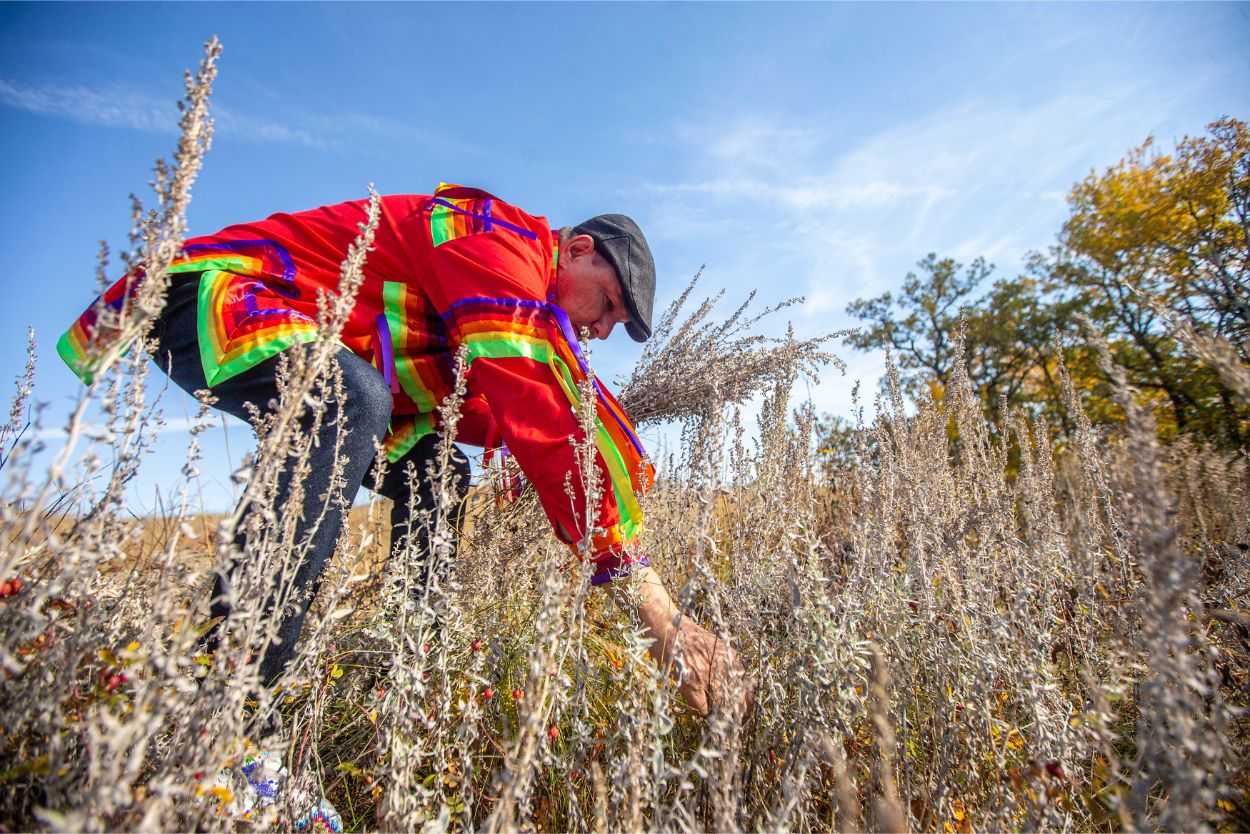

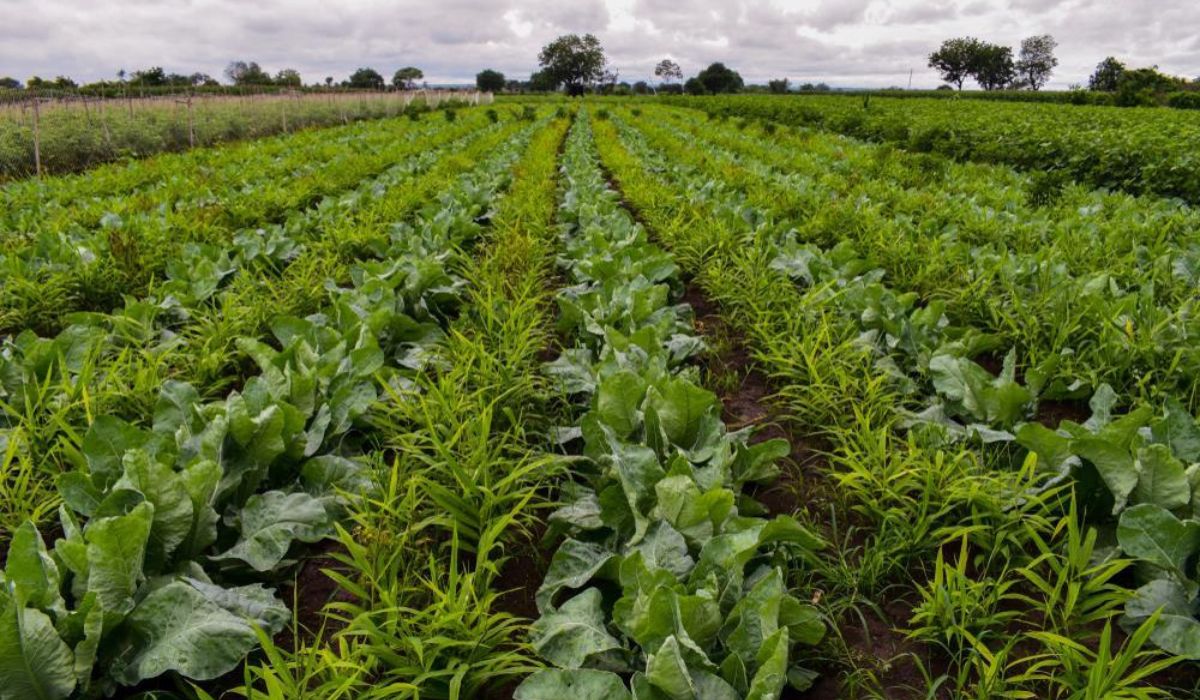
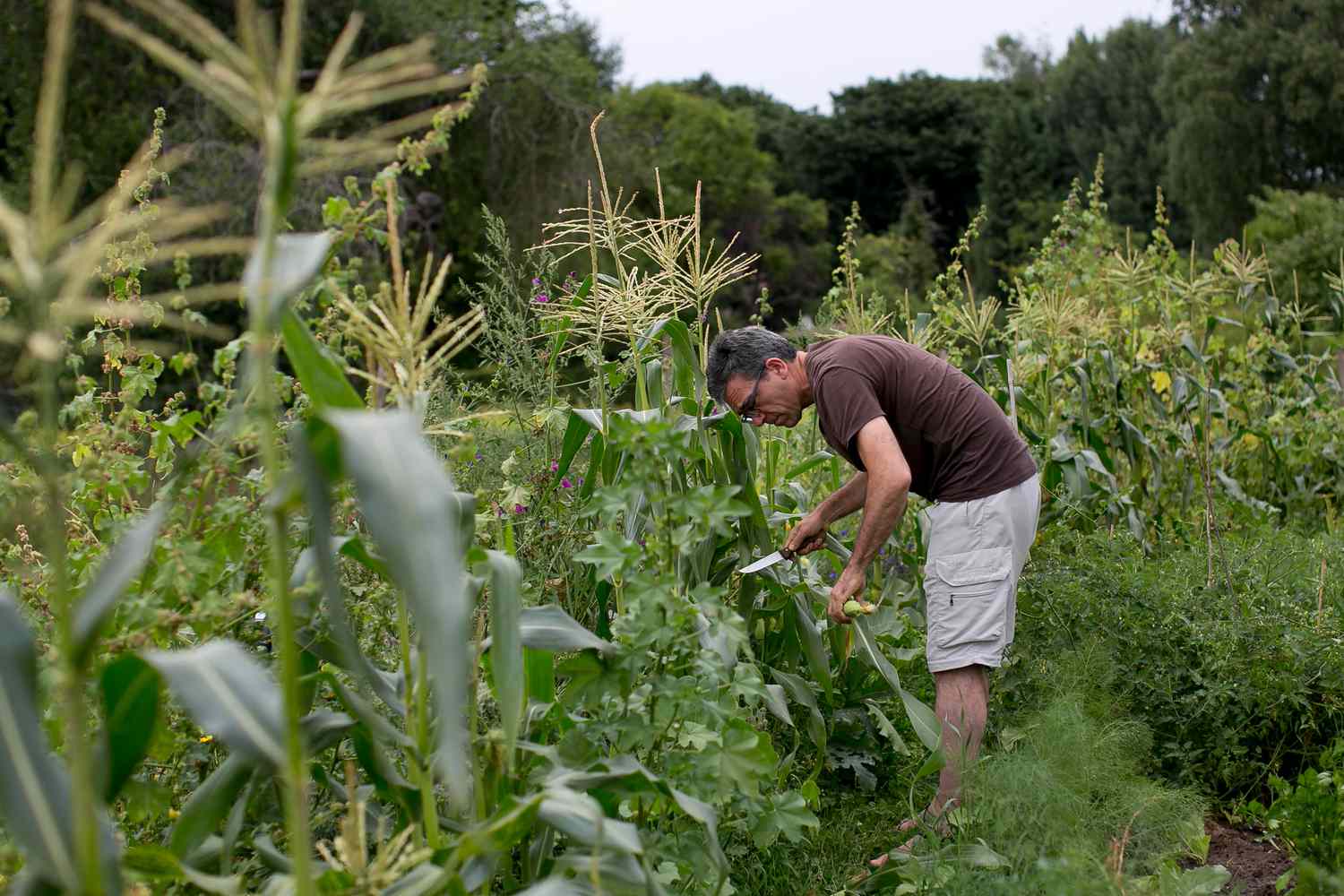
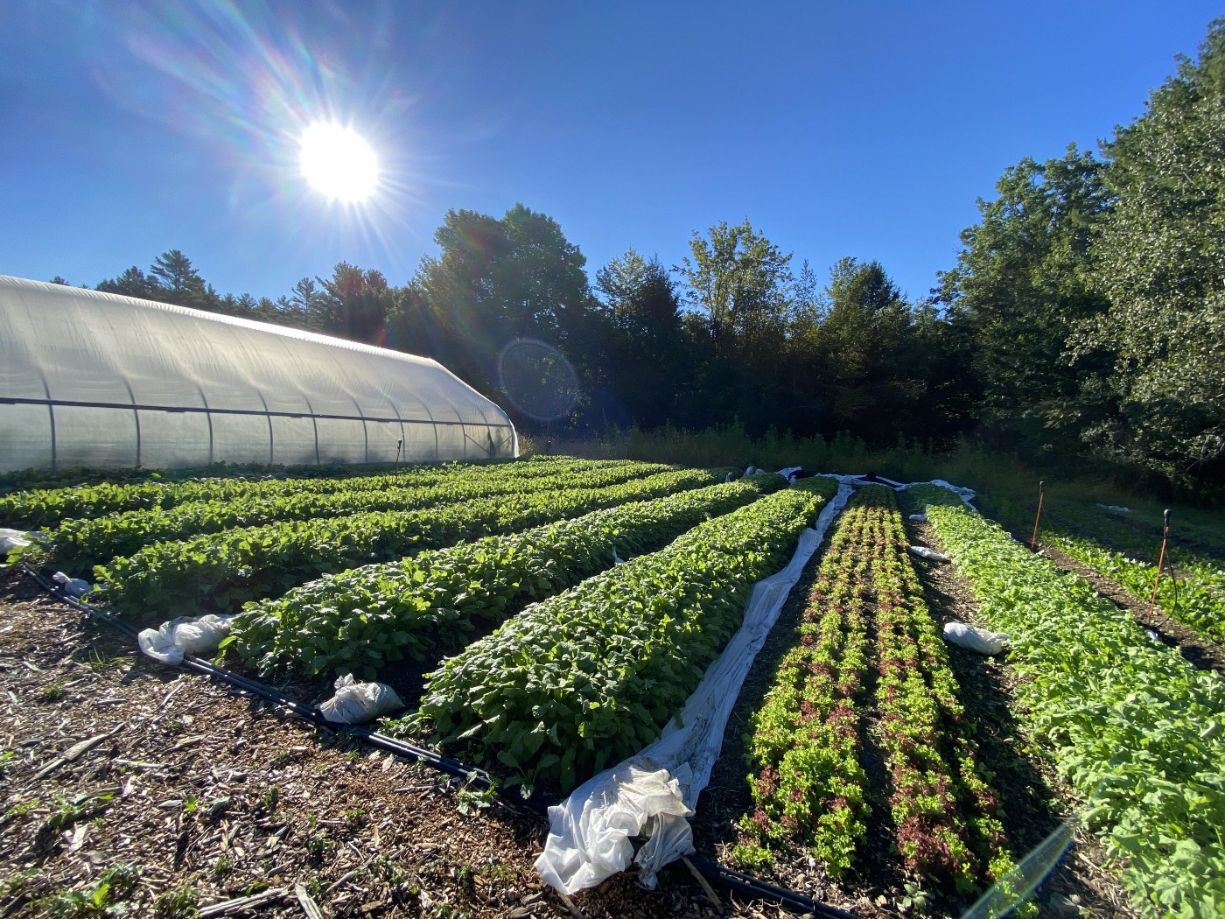
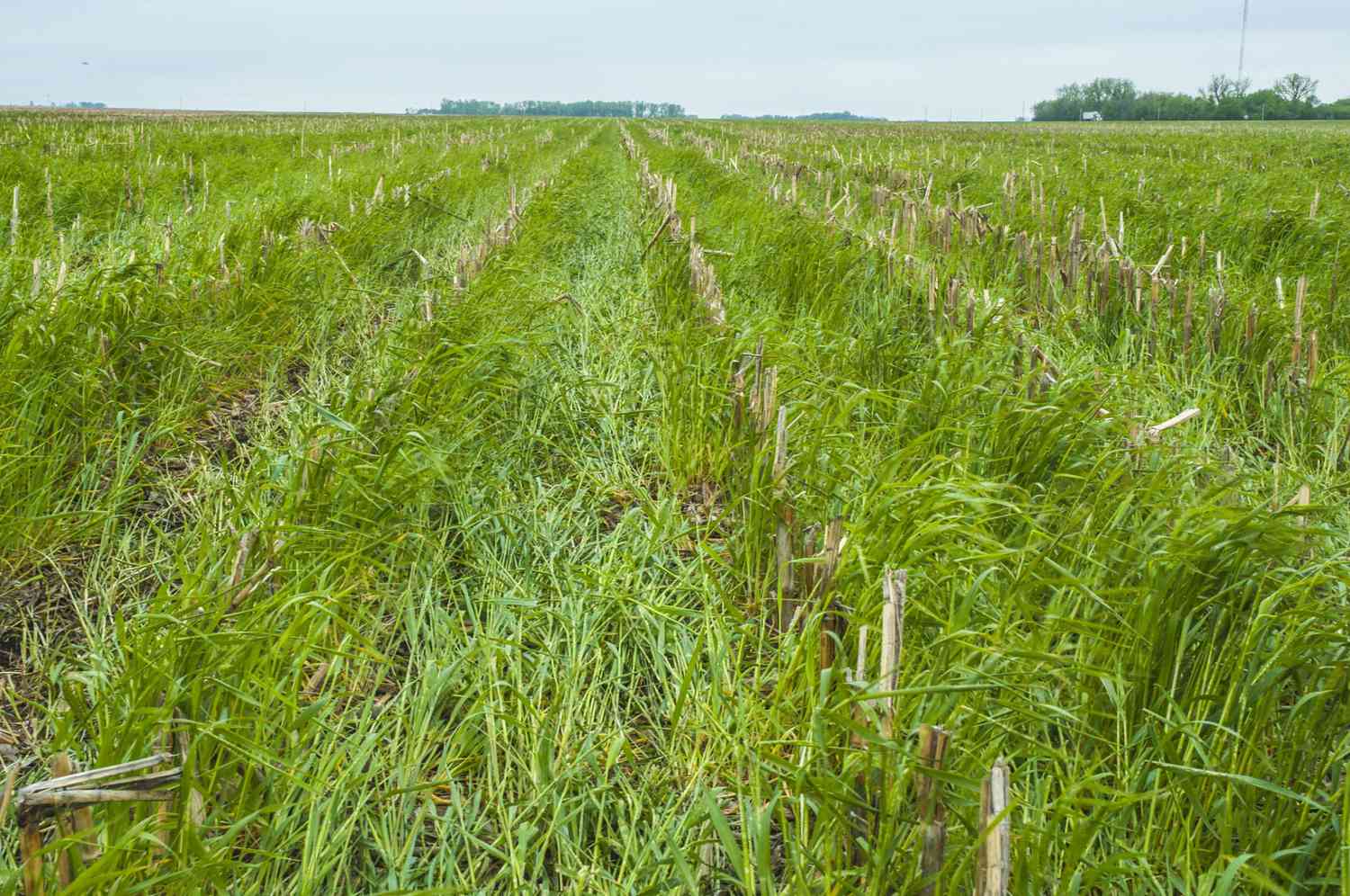
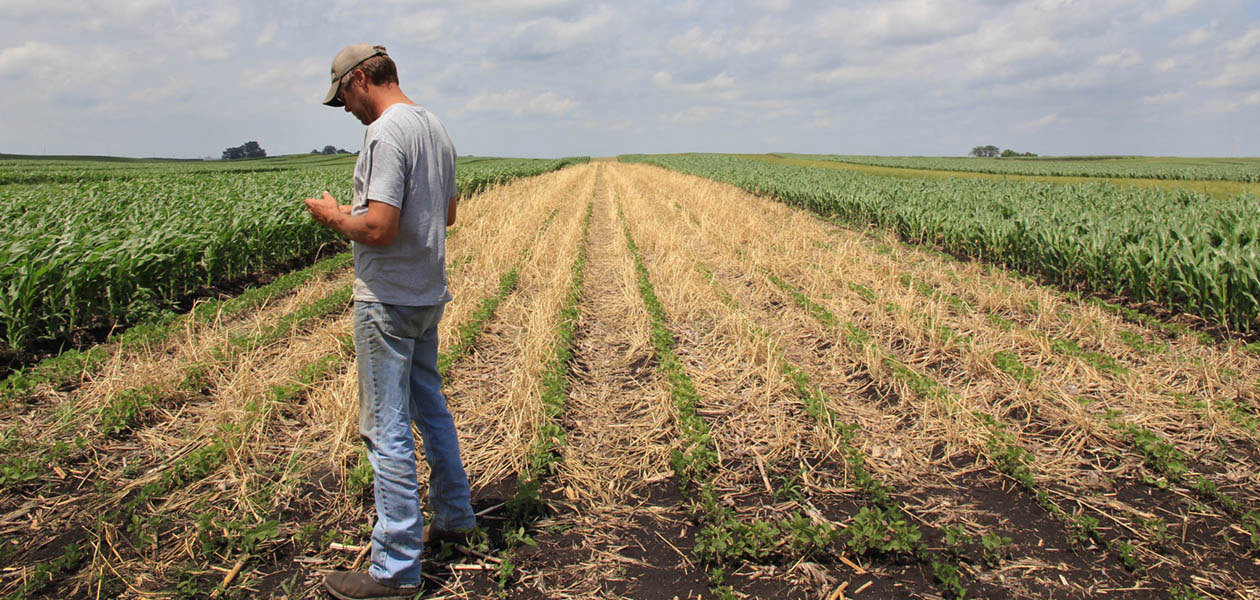
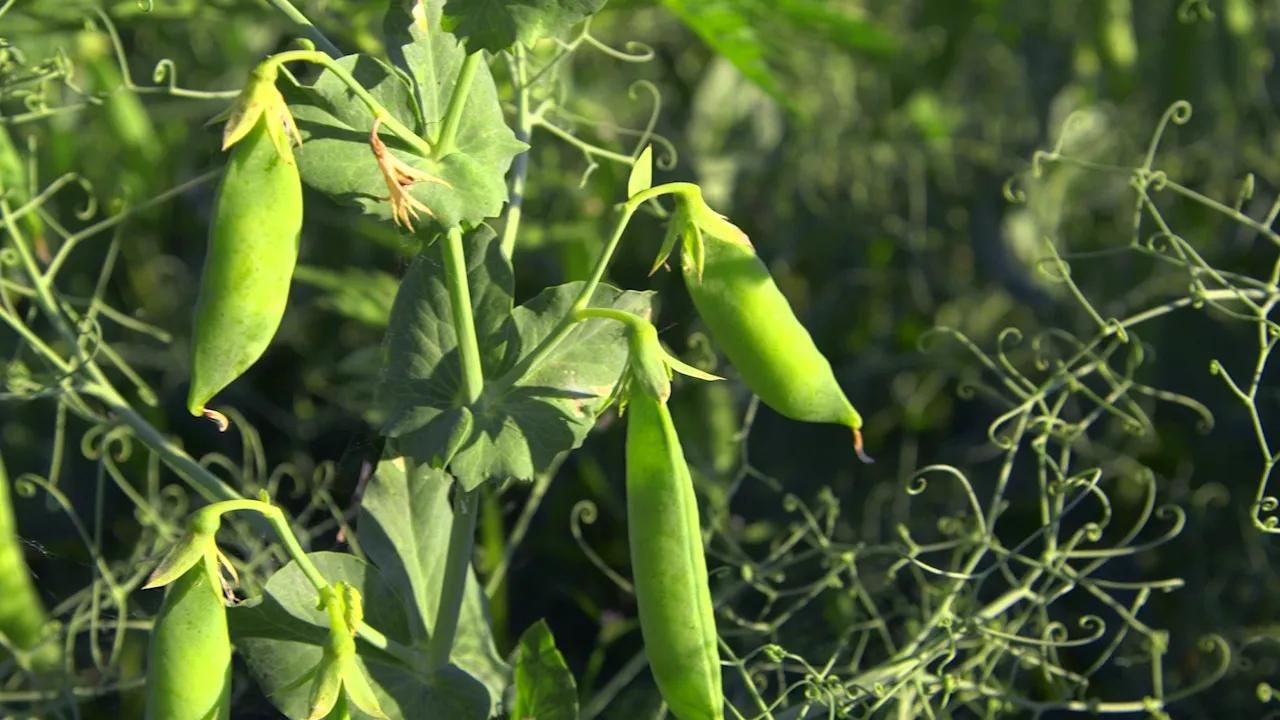





0 thoughts on “Why Are Crop Rotation And Letting Land Rest Sustainable Practices?”